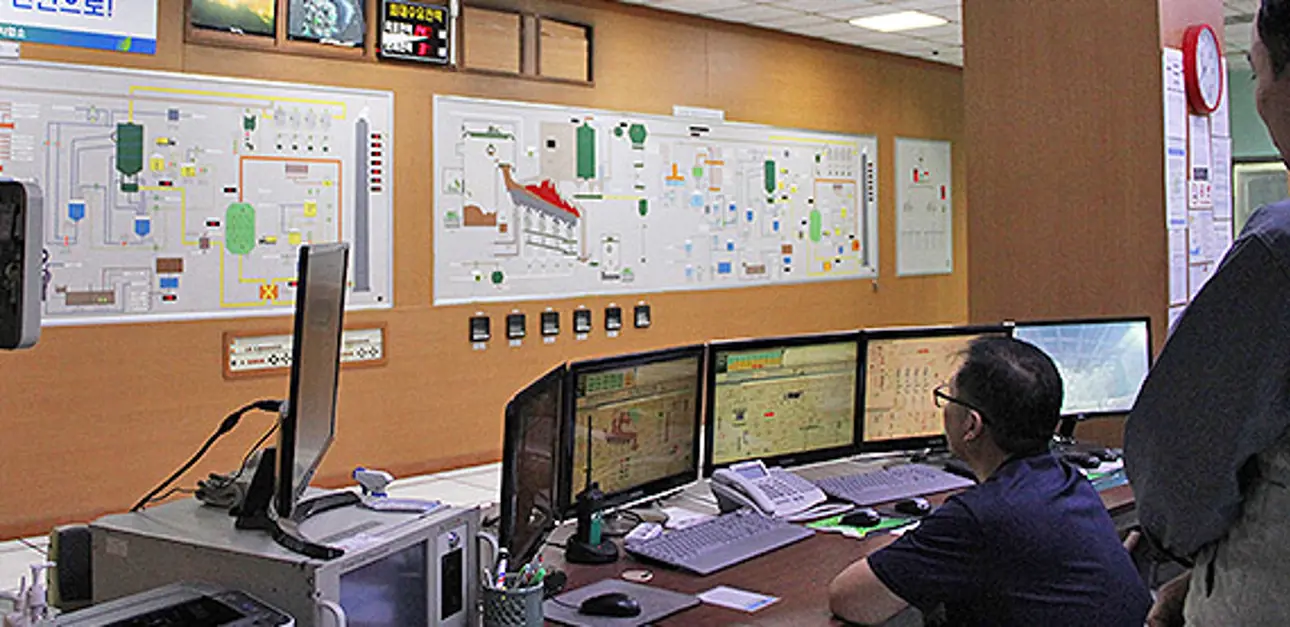BECO in Busan working towards the future – supported by Valmet
BECO, the Busan Environmental Corporation, stands for sustainable business. One of its business areas is managing and operating refuse incinerators. The Haeundae incineration disposal plant has a treatment capacity of 170 tons/day and runs with the help of Valmet automation.

At the Haeundae incineration disposal plant, the first unit built between 1994 and 1996 was shut down in 2013. The second unit was built between 1996 and 1997 and is still running today. That incinerator treats 170 tons of waste daily and covers the areas of Haeundae, Gijang, Suyeong, Geumjeong, Dongnae and Yeonjae in Busan, South Korea.
 |
 |
Sustainable business for local needs
In the process of incineration, communal waste is used and burned at high temperatures. Since the waste can be utilized, less landfill is needed. The steam generated will be delivered for industrial use at the same Haeundae site.
The manager of the plant, Yun Tae-Won, agrees with the future-oriented business focus of BECO. He believes sustainable and stable development of the incineration plant is important for the local region. According to him, the Valmet automation system is functioning well and supporting their business in the most advanced way.
Valmet’s system in use for years

Jin Jae-Uk is also satisfied with the automation system and related services from Valmet. The first automation system, Damatic XD, was installed in 1996 with Samsung Heavy Industries, Valmet’s value-added reseller (VAR). Later, the second unit got Valmet’s system too, which has been upgraded over the years according to the evolving needs.
One essential function of Valmet’s system is the Valmet DNA Operate Trend and Event Archive (TEA). “With help of TEA, we get the history of trends and events presented to us. It gives us a lot of information for further evaluation. The data is utilized and discussed every morning in our meeting,” explains Jin Jae-Uk.
Valmet DNA offers process stability and reliability
In the control room, four teams of operators work in shifts of five members each. One of the operators is Jang Jong-Hyeun. He states: “Earlier, at another site, I worked with a different DCS system, which was much more complicated to use. From my point of view, Valmet DNA is a very user-friendly system. It easily guides you to take the right steps.”

From the left: Valmet's Service Manager Lee Chung-Bae, Maintenance Manager Lee Hwangsu, Operator Jang Jong-Hyeun

The role of Lee Hwangsu is very important at the plant. He knows the history of the system and all its details. He is also the main contact for Valmet and appreciates the cooperation.
New technical features, where to focus and what to exchange are always discussed with Lee Chung-Bae, Service Manager from Valmet. “We have a continuous dialog with the customer,” he states.

From left: Lee Chung-Bae, Yun Tae-Won, Lee Hwangsu
Lee Hwangsu agrees that together they make a good combination: the Valmet DNA automation system, the plant operators’ own skills and Valmet’s support. This powerful package is ready to work towards a common goal: to enhance the green future of the Busan region.
For more information:
Chung-Bae.lee(at)valmet.com
Together we make a good combination: the Valmet DNA automation system, the plant operators’ own skills and Valmet’s support. This powerful package is ready to work towards a common goal: to enhance the green future of the Busan region."